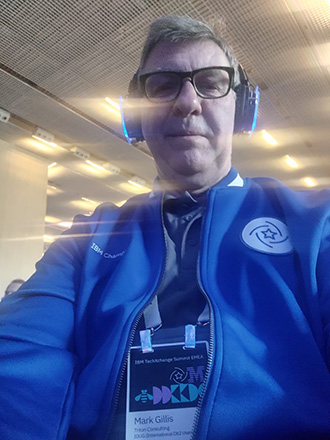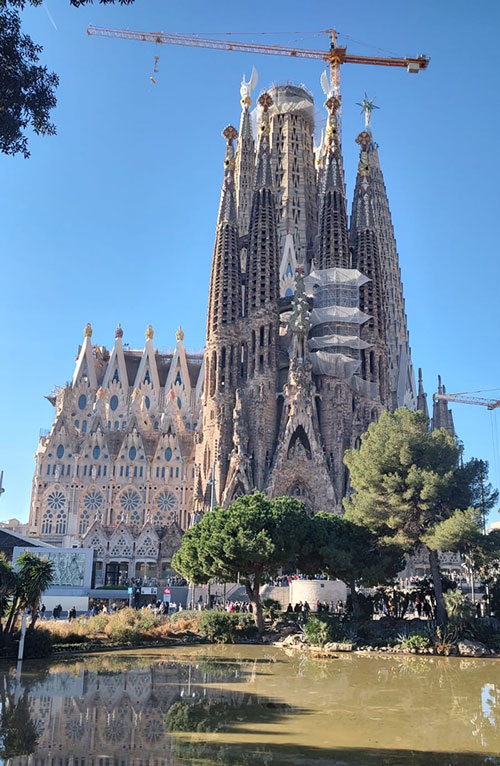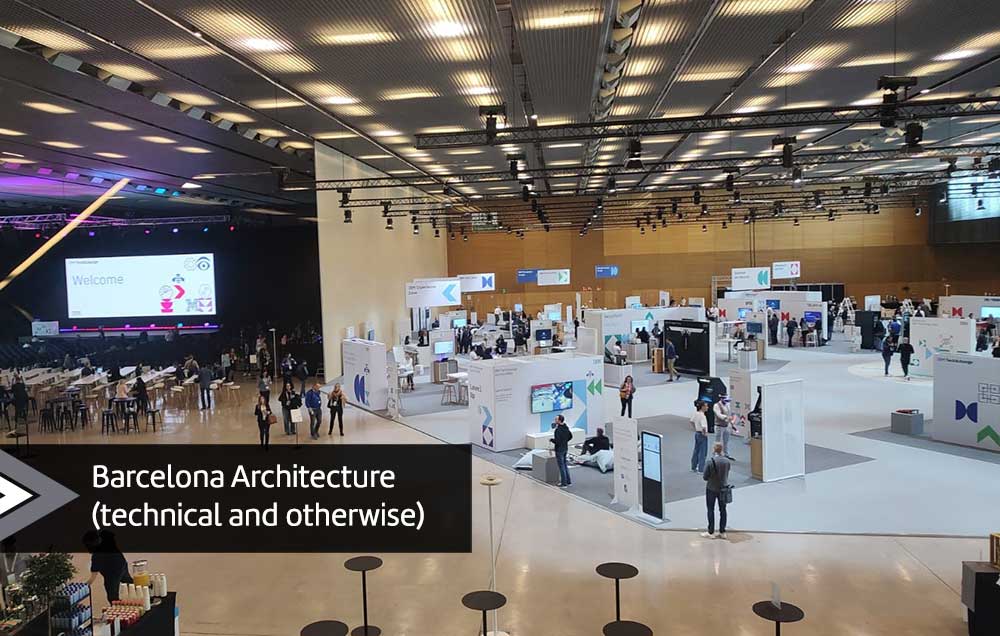Squeezing into Barcelona between Storms Isha and Jocelyn was actually a breeze (pun intended). Dire warnings of delays from the airlines didn’t materialise and the only fly-in-the-ointment was the post-Brexit retribution security procedures, with 6 unmanned and 4 manned passport checks for the EU passport holders and 2 for the 2 planeloads arriving simultaneously from the UK. But I guess we have no-one to blame but ourselves.
Wandering into the airport and finding an ATM so that I could get a few Euros for the taxi, I was approached by the chap using the ATM next to me. “Do you speak English?” he asked. “Not too bad” I replied and then realised that I was being addressed by our newest recruit, John Campbell. After being a bit startled to be addressed by name, he and I shared a taxi and reminisced about some of the several places we’d both worked but as is often the way, without ever actually meeting.
The Keynote session on Tuesday morning was, as you’d probably expect, heavily focused on AI. What was fascinating was that an actual real-world example; one that was breaking news, was brought along. The Data Director from Seville FC was interviewed on stage by Dinesh Nirmal (Senior Vice President, Products, IBM Software) on the subject of the scouting software they developed with IBM. Briefly, this allows someone at Seville to run a query on the 1,000,000s of reports from scouts compiled over years, on thousands of players, without having to couch the query using the specific terms they need. The example given was when the manager has decided he needs a “Tank Striker”. That’ll be a No 9; a Centre-Forward and a big, physical type. He’ll be the sort of player to barge through tackles, shrug off defenders and fight his way into the box to score. But that term “Tank Striker” might not appear anywhere in the database. What the AI engine enables is for someone to submit a query which basically says ‘Get me a list of Tank Strikers’ and to learn what characteristics that involves and go searching for them, however they might be phrased. That, as a manual task, could take months. With generative AI powering the search, it can take minutes.
Back in the IDUG track, I was able to spend the afternoon with 3 very informative sessions:
- Latest From The Lab – Christian Garcia-Arellano
- Data Warehouse Implementation with Db2 Time Travel and DataStage – Michael Tieffenbacher
- HADR Performance Tuning – Dale McInnis
 As always with these sessions, there is more content than you can easily digest in a sitting. I’ve got pages of notes and things to explore and look up when I get back to base. At least once in each session, I experienced an “A-ha” moment as it dawned on me that I was having an option or feature explained to me that could deliver tangible cost benefits to our customers.
As always with these sessions, there is more content than you can easily digest in a sitting. I’ve got pages of notes and things to explore and look up when I get back to base. At least once in each session, I experienced an “A-ha” moment as it dawned on me that I was having an option or feature explained to me that could deliver tangible cost benefits to our customers.
Today (Wednesday 24th) I gave my “Table Partitioning; the Good, the Bad and the Ugly” one last outing before retirement. It’s been around the block for a while; originally a blog (Triton Tech Blogs ) first published in April 2019. It’s now time for it to be put out to pasture, or wherever Blogs go to spend their final years.
There were then 2 subsequent presentations
- Db2 Strategy and Roadmap – Miran Badzak
- All About Indexes – Ian Bjorovde
 The first outlined some of the biggest deliverables that arrived in 2023, notably AWS Db2 on RDS and Db2 Warehouse Gen3, and then gave us some insight into what the next release; V12, is going to provide. The second went over what you might think was old ground but still managed to provide some new and valuable information and even answered a question that had been raised in my own presentation.
The first outlined some of the biggest deliverables that arrived in 2023, notably AWS Db2 on RDS and Db2 Warehouse Gen3, and then gave us some insight into what the next release; V12, is going to provide. The second went over what you might think was old ground but still managed to provide some new and valuable information and even answered a question that had been raised in my own presentation.
And we’ve also had the chance to meet some of returning and new IBM Champions, of which there are over 1,100 worldwide now. Easily identifiable at the conference with our smart blue jackets, we’ve been able to interact with other experts in their respective fields and shared a very sociable dinner this evening.
And, finally, I was able to get out for a look around town and went over to see what has happened to Sagrada Família in the 10 years or so since we were last here for IDUG EMEA. It’s a staggering building but (spoiler alert) still not finished. They started it in 1882. Yes, 1882, so they really have been working on this for 142 years. But then York Minster took 252 years apparently so it’s unlikely to be finished the next time we’re back here on a conference either.


